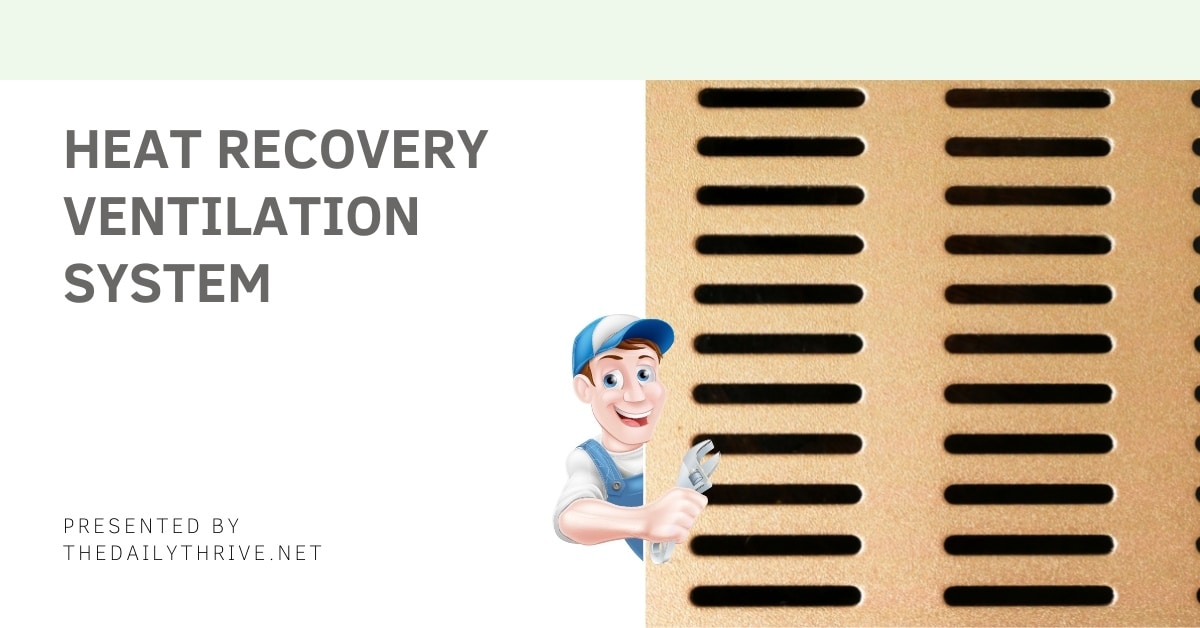MVHR or Mechanical Ventilation with Heat Recovery to give it its full title. Extremely popular systems in new builds and eco homes where maximum energy efficiency through minimal heat loss from a property is required. To make a house as energy efficient as possible normally means sealing up gaps or draughts and making it as air-tight and insulated as possible. This can make a modern home incredibly cheap to heat.
The downside to this, however, is air quality. A lack of ‘natural breathing’ inside a house will mean that moisture cannot escape properly, and we soon have a damp environment with running condensation and mold growing. This is why architects and eco-home owners are using MVHR heat recovery systems to manage heating and air quality.
Mechanical Ventilation Heat Recovery
Mechanical heat recovery systems are designed to provide economic 24 hours 7 day a week home ventilation at recommended home humidity levels, keeping your home condensation, damp, and mold-free. Heat recovery does this by recycling the air in your home and re-using already heated air generated in the warm parts of your house.
At the same time, fresh air from outside is mixed together, and excess moisture is removed. Up to 80 – 90% of heat can be extracted and recycled in this manner, providing a considerable cost on heating costs.
Two common types of heat recovery systems
- MVHR – A whole house heat recovery system, a central unit normally located in an attic or loft, is connected via ventilation pipes to the key rooms in your home, as seen in the explanation diagram. Meanwhile, the air is drawn in or vented from vents to the outside in the attic walls or roof itself.
- SRHR – Single Room Heat Recovery, a much more modern and economical solution to an extractor fan. Fitted as the name suggests, on a room-by-room basis as a through-the-wall solution, it works in exactly the same manner as MVHR.
A typical heat recovery system fitted – Home heat recycling is achieved by recovering heat from the air inside the home that would normally be lost to the outside and transferring this heat to fresh air being drawn into the property, which the system then distributes clean, dry air throughout the property.
MVHR Heat Recovery Installation and Costs
Although fitting a heat recovery unit is possible for someone with good DIY skills, attention will have to be paid to local regulations as electrical work or installation may have to be commissioned and tested and then signed off by local authorities.
A heat recovery system costs about $1500 to $5000 dollars fitted for an average 3 or 4-bedroom house.
Heat recovery ventilator and allergies
Many units also come equipped with filters that can remove pollen, carbon monoxide, dust, mold spores, and dust mite droppings.
So if you have any sort of breathing difficulties like asthma or suffer from hay fever, you may get up to a 50% improvement in health terms from breathing cleaner air provided by an MVHR unit.
MVHR Heat Recovery Versus
Heat Recovery vs PIV – Heat recovery ventilation differs from Positive Input Ventilation System because it’s a way of recycling heat already generated in your home and using it again. Although a PIV unit also filters the air and controls humidity to stop dampness, mold, and condensation, it cannot reuse heat in the same manner and, as such, will not contribute to heating your house in the same way.
Both heat recovery and PIV are whole-house solutions to air quality and humidity. Whilst both can be installed by competent homeowners with good DIY skills, PIV is a lot easier to install.
Heat Recovery vs Dehumidifier – A dehumidifier will reduce condensation, mold, and dampness but offers no filtering of the air if this is a concern, and depending on the size of the house and the quality of the dehumidifier, it may struggle to cope in large houses as a single unit.

